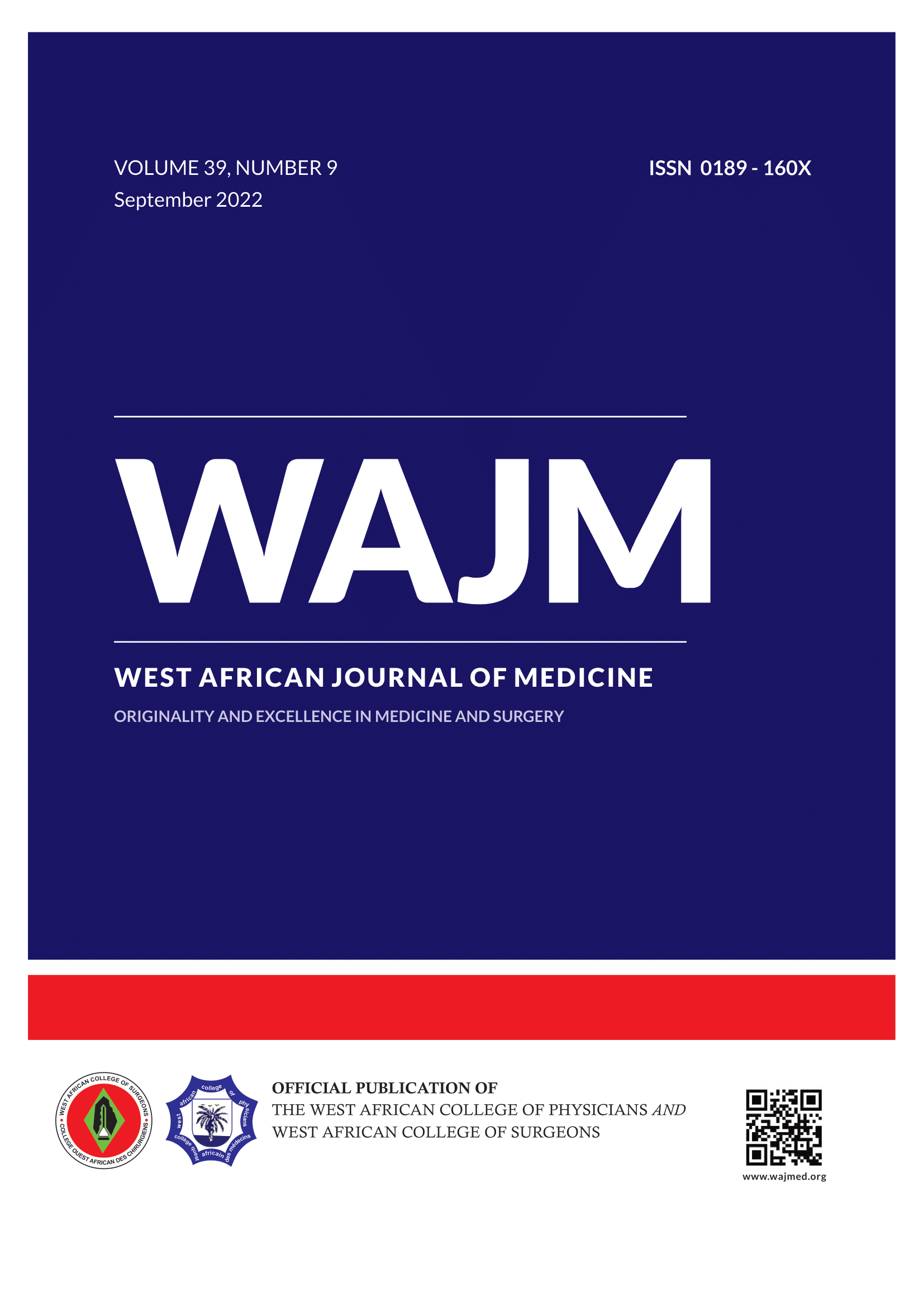ORIGINAL: Perception and Concerns about the Use of Gloves, Facemask, and HIV Discriminatory Attitude of Children attending Dental Clinics in Southern Nigeria
West Afr J Med . 2022 Sep 16;39(9):909-915.
Keywords:
Children; Discriminatory; Facemask; Gloves; HIV.Abstract
Introduction: The use of face masks and gloves can prevent possible cross infection between dental patients and health care practitioners.
Aim: The study identified the perception of paediatric dental patients on the need for dentists to use face masks and gloves; and their attitude towards using the same clinic with paediatric dental patients living with HIV.
Methods: This was a cross sectional study that recruited 438 children aged 8-15 years attending three paediatric dental clinics located in Southern Nigeria.
Statistical analysis: The dependent variables were perception of cross infection control and attitude towards children living with HIV. The independent variables were age, sex, socioeconomic status and location of clinic. Chi-square analysis was conducted to determine the associations between the dependent and independent variables. Logistic regression analysis was also conducted to assess the effect size of the associations between the dependent and independent variables. The level of statistical significance was inferred at P < 0.05.
Results: Majority of the respondents agreed that it was necessary to wear gloves (98.6%) and facemasks (88.1%) during patients' management. More females 62(28.2%) than males 38(17.4%) assumed gloves were used by dentists to protect themselves from patients' bad breath (p=0.007). More children from Benin 97(64.2%) were aware that face masks protect the dentists and the patients (p=0.004), and a few believed that it is embarrassing to patients for dentists to wear facemasks (p=0.001). More children 102(70.8%) from Ile-Ife perceived that face masks protects from bad breath (p=0.004).Children less than 10 years (AOR: 0.85; 95% CI: 0.42-1.70; p=0.64), with high socioeconomic status (AOR: 0.90; 95% CI:0.53-1.52; p=0.70) and children aged 10 to 14 years (AOR: 0.85; 95% CI: 0.44-1.63; p=0.62), in the middle socioeconomic status (AOR: 0.72; 95% CI: 0.39-1.33; p=0.30) were less willing to use the dental clinic alongside children living with HIV.
Conclusion: There were sex, and clinic location disparity in the perception and attitude of children towards the use of Personal Protective Equipment and the use of the dental clinic alongside children living with HIV.
Keywords: Children; Discriminatory; Facemask; Gloves; HIV.


